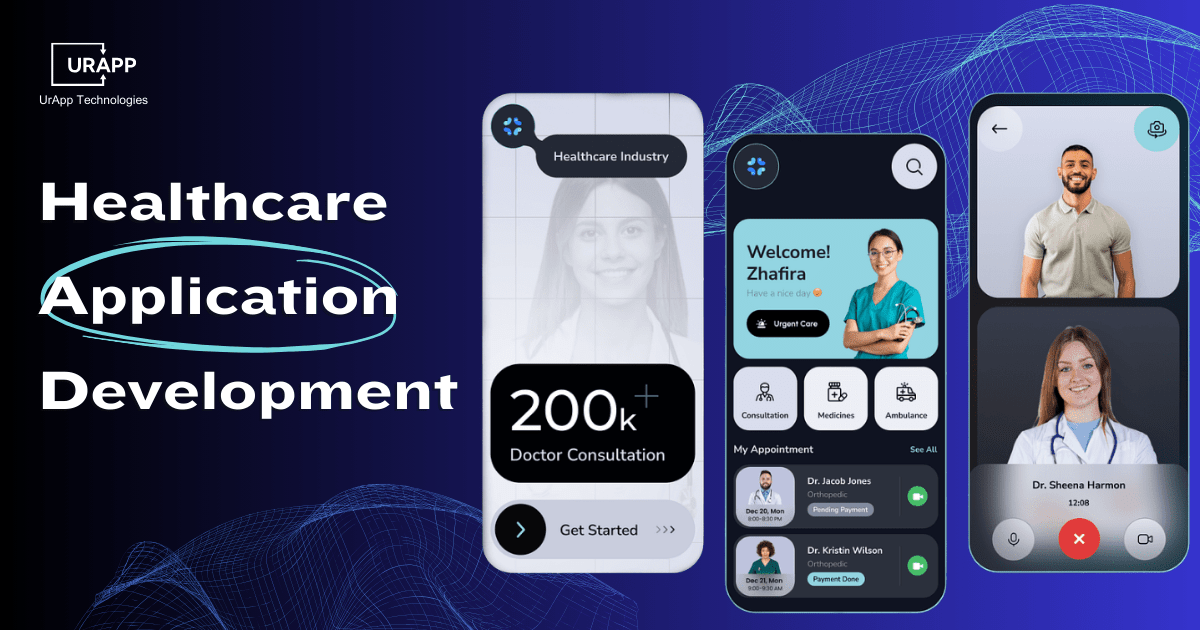Embedded Software Development: Key Concepts, Process, and Tools
Key Takeaways
- Rising Market Demand: The embedded software market is projected to grow from $19.01B in 2025 to $34.16B by 2033 at a 7.6% CAGR.
- Real-Time Performance: Embedded systems are built for quick response, low power use, and tight hardware integration.
- Cross-Industry Adoption: Used across automotive, healthcare, telecom, and smart devices for enhanced automation and efficiency.
- Modern Toolset: Tools like Keil, FreeRTOS, and TensorFlow Lite drive development, debugging, and AI integration.
- Future-Driven Trends: Key trends include AI at the edge, OTA updates, and security-first firmware for smarter, safer devices.
Introduction to Embedded Software
Have you ever wondered, “How does your smart TV respond instantly when you change the channel?” The solution lies in embedded software development, a critical field that combines hardware and software to build systems that execute specific tasks. Devices that need to function in real time and have close hardware integration depend on embedded software.
Develop a software that runs on certain hardware and makes sure it can perform effectively and dependably is known as embedded software development. This method is very important for a wide range of applications, from household gadgets to advanced industrial machinery.
The global embedded software market size was valued at USD 17.67 billion in 2024 and is projected to reach from USD 19.01 billion in 2025 to USD 34.16 billion by 2033, growing at a CAGR of 7.6% during the forecast period (2025-2033). Living in an interconnected world where businesses seek to remain competitive, knowledge of embedded system development is a key area that is required.
As a Digital transformation company, UrApp Tech is at the forefront of this innovation, helping industries leverage the power of embedded systems to enhance their products and services. This blog will explore the significance of embedded software development, its lifecycle, applications and future trends that are shaping the industry.
What are Embedded Systems' Roles
The purpose of embedded systems is to carry out specific tasks in larger electrical or mechanical systems. Everything from your microwave to sophisticated medical equipment and industrial machinery has these systems.
Key Characteristics of Embedded Systems:
-
Small Footprint
Designed to fit within the physical constraints of a device, allowing for compact designs.
-
Committed Task
designed with efficiency in mind, with a focus on specialized functions rather than general use.
-
Minimal Power Utilize
Energy-efficient, which is essential in today's environmentally focused market, makes them perfect for battery-operated products.
-
Quick Reaction
ability to react quickly to inputs, which is important in applications that depend on safety.
-
Close Integration
integrates software and hardware seamlessly to deliver optimum performance and dependability.
The Importance of Embedded Software Development
In today's world, embedded software development has greater importance. As automation, artificial intelligence and the Internet of Things (IoT) continue to transform businesses, embedded systems grow more and more important.
In today's world, embedded software development is more important. As automation, artificial intelligence and the Internet of Things (IoT) continue to transform businesses, embedded systems have begun to become more and more important. These systems seek to develop more intelligent, efficient solutions that can adjust to unforeseen situations rather than just being functional.
Top Reasons Why Businesses Invest in Embedded Software
-
Effectiveness
Reduced operational costs and increased production are the results of streamlined procedures.
-
Performance
Devices with optimized software operate more smoothly and provide a better user experience.
-
Safety
As devices get increasingly connected, improved defence against cyberattacks is essential.
-
Adaptability
easily adjustable to new standards and technology, which allow companies to maintain their competitiveness.
-
Cost Effectiveness
It is a smart investment since it lowers operating expenses through efficiency and automation.
It is impossible to exaggerate how much embedded software development has affected contemporary industry. Businesses incorporate these technologies more and more to enhance user experiences, create new products and keep one step ahead of the competition.
For instance, embedded systems are necessary for the development of advanced driver assistance systems (ADAS), which increase efficiency and safety in the automotive sector.
Thus, companies that adopt embedded system development are more likely to thrive in the competitive marketplace. They can use these technologies to fulfil the higher demands of their customers, innovate and cut expenses.
Embedded System Software Development's Top Use Cases
Innovative applications that improve functionality and user experience are made possible by embedded system software development, which changes a number of sectors. Here are a few important application cases from various industries:

Automotive
-
Electronic Control Units for Automobiles
Oversee a variety of car operations, such as safety systems and engine control.
-
Systems for Advanced Driver Assistance (ADAS).
Provide features like collision avoidance and lane management assistance to increase safety.
-
Systems For Information.
Provide drivers and passengers with enjoyment and information that combines navigation and media.
Healthcare
-
Diagnostics Equipment
Assist in accurate disease detection, improving patient outcomes through early intervention.
-
Patient Detection Systems
The ability to track vital signs in real time allows for timely medical intervention.
-
Wearable Medical Technology
Monitor health indicators consistently to facilitate preventative health care.
Consumer Devices
-
Wearable devices
Fitness trackers and smartwatches monitor health measurements and activity levels.
-
Smart Home Apparatuses
Intelligent home appliances like lights, security systems and thermostats can enhance convenience because they can learn the user preferences and routines.
-
Kitchen appliances
smarter refrigerators and ovens which automatically alter settings with user input.
Industrial Automation
-
Supervisory Control and Data Acquisition (SCADA)
SCADA tracks and regulates the work of the industry, provides efficiency.
-
Robotics
Automate production and assembly processes to improve accuracy and save labour expenses.
-
Systems for Predictive Maintenance
Prevent equipment breakdowns before they happen to reduce maintenance expenses and downtime.
Telecom
-
5G Networks
Make communication quicker and more dependable to open up new applications like driverless cars and smart cities.
-
Smart Routers
maximize both household and business users' internet performance and connectivity.
-
Tools for Monitor Network
Tools for network monitoring guarantee network security and reliability, which is essential to maintain service quality.
These examples demonstrate how embedded system software development is critical to innovation across multiple industries, speed and improved user experiences.
Process of Embedded Software Development
Each of the various essential stages of the embedded software development lifecycle is necessary to produce successful embedded systems. Here is a detailed summary:

Plan and Requirements
-
Set Clear Goals
Determine the system's objectives, both the technical and user requirements.
-
Compile the necessary information.
Get feedback from project managers, engineers and customers, among other stakeholders.
-
Make specifications.
To direct development, record performance and functionality requirements.
2. Architecture Design
-
Architecture of the System
Describe the hardware and software interfaces and how the components will work together.
-
Choose Your Hardware
Select the right controllers and sensors based on your budget and performance needs.
-
Interface Design
Organize user interactions with the system to make sure it's easy to use.
3. Coding and Integration
-
Software Development
Write code using languages like C or C++, focusing on efficiency and reliability.
-
Integrate Hardware
Combine software with the selected hardware components which ensures compatibility and performance.
-
Version Control
Effective teamwork and code change management need the use of tools.
4. Quality Assurance
-
Unit Testing
Test individual components for functionality, ensuring each part operates correctly.
-
Integration Testing
Ensure all parts work together as intended to identify any issues that arise during integration..
5. Deployment and Maintenance
-
Implementation
In order to ensure that each component functions optimally, deploy the system in a real-life setting.
-
Monitoring
Monitor performance and user responses constantly in order to recognize points of improvement.
-
Updates
You will need to provide constant support and make software updates during the necessary period to keep the system secure and working.
Table of Tools and Their Usage
|
Tool |
Purpose |
|
Keil µVision |
IDE for ARM-based microcontrollers |
|
MPLAB X IDE |
Development environment for PIC microcontrollers |
|
IAR Embedded Workbench |
Comprehensive development tool for embedded systems |
|
Segger J-Link |
Debugging tool for ARM devices |
|
GCC |
Open-source compiler for C/C++ |
|
FreeRTOS |
Popular RTOS for embedded applications |
|
MATLAB/Simulink |
Model-based design for embedded systems |
|
TensorFlow Lite |
Lightweight machine learning for IoT |
"To see how these tools help with productivity, take a look at our guide on AI monitoring in the workplace.
Challenges in Embedded System Development
While embedded system development offers numerous benefits, it also presents several challenges that developers must navigate:
-
Memory Constraints
Limited memory can restrict software functionality, making efficient coding essential.
-
Time Constraints
Real-time systems must respond quickly, complicating development and testing processes.
-
Power Limitations
It is also essential that battery operated devices have low power consumption, which must be considered as part of design.
-
Hardware-Software Synchronization
It is not an easy task to maintain a balance between the concepts of hardware and software and thus it should be extensively tested.
-
Security Risks
Cyberattacks are frequent on embedded systems and strong security is required at every stage of the development process.
-
Firmware Bugs
The problems in the software may result in the failures of the system, that is why it is important to test the software and debug it.
In UrApp Tech, we are dealing with these issues by making rigorous efforts on testing, continuous integration and security awareness and making sure that our embedded systems are stable and efficient. We will do everything necessary to overcome these challenges that would allow us to provide quality solutions that would satisfy the needs of our clients.
Trends in Embedded Software Development
The field of embedded software development has become unstoppable . Here are some key trends shaping its future.

-
Voice and AI Integration
Enhancing user interfaces through voice recognition and AI capabilities which makes devices more user friendly.
-
Excessive-the-Air (OTA) Updates
It enables the software update process remotely with the aim to update the device functionality without physical connections and up grade security levels.
-
Edge AI
Brings the AI processing nearer to the device to respond quicker and have less latency, which is mandatory to real-time applications.
-
Security-First Firmware
Ensure security is a key consideration in firmware design to mitigate risks of vulnerabilities to make devices safe against cyber threats.
-
Low-Energy Architecture
Develop systems that consume less power, supporting sustainability initiatives and extends the battery life for portable devices.
Most Popular Embedded Technologies Stack Overflow 2024 Survey
According to the Stack Overflow 2024 Developer Survey, Raspberry Pi (38.6%) is the most popular embedded technology, followed by Arduino (29.9%) and GNU GCC (29.1%). These tools are widely used by developers for building and programming embedded systems across various industries.

Future of Embedded Software Development
Embedded software development has a bright future in 2030. We can expect considerable progress in smart systems, especially automation, healthcare, and defense.
Key Predictions:
-
Increased Automation
This will automate more processes that will decrease human interference and increase efficiency in any industry.
-
Industry 5.0
A movement towards human-focused production, humans and machines cooperating to streamline production.
-
Healthcare Innovations
Enhanced monitoring and diagnostic tools will improve patient care which leads to better health outcomes.
-
Smarter Systems
Devices will also become more intelligent by learning user choice and actions so as to create more user specific experiences.
The change offers numerous opportunities to innovators who want to establish themselves in the embedded software industry. With the ever-growing advancement in technology, the number of potential ways to utilize embedded systems will only grow, and this will push innovation and its evolution.
Conclusion
To sum up, embedded software development is vital to the innovation of numerous industries. Having absolute knowledge about the depth of embedded systems and applications, businesses have the opportunity to leverage it in order to enhance efficiency, security and experience.
It is essential to work with the right team. We, at UrApp Tech, strive to offer nothing short of the best embedded software products, which fulfill the requirements of the current, technology-driven world. Our knowledge and passion to quality guarantee that we provide innovative solutions that help businesses flourish.
By partnering with UrApp Tech, you can create your own smart solution. Jointly, we will develop the generation of embedded systems which will make the future. Contact us now!







